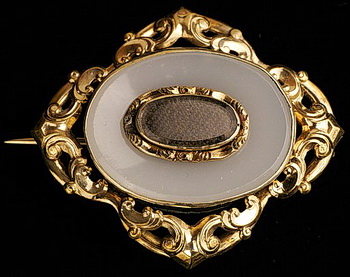
If you’ve ever visited a jewelry outlet, then the thought of how they create these embellishments and adornments may have crossed your mind at one point or another. The entire process can be quite fascinating when considering how a raw product from Earth’s top layers is transformed into a stunning masterpiece of shiny, sometimes colorful and many times expensive works of art.
Our aim is to detail the various steps that are involved in the process of creating jewelry from these vast amounts of minerals, especially diamonds. First and foremost, we will inspect the most commonly used method, which is called the lost wax procedure. The reason it is called lost wax is that the object that will be created is sculpted out of wax to the exact specifications that the finished product will look like.
Primary Steps

The art of creating jewelry involves the amalgam of the most innovative techniques and sophisticated research. The procedure is defined as a composite process which includes a meticulous and lengthy step. Each and every phase from start to finish is detailed and the end result is a treasured piece of fine jewelry.
The components of most jewelry are stones, metals, and its accessories. Every article is set apart through an investment of time and craftsmanship. With the notable exception of personalized jewelry, which is generally handcrafted, the vast majority of jewelry manufacturing is executed using cast machines.
The primary concern is to concoct a design that is unique in terms of aesthetics and appearance. Expert designers first make a sketch, which acts as a blueprint and marks the beginning of the process.
Each article created on paper is merely just a concept at the start. It is essentially a rough draft that is established through a collaboration between the designer and the craftsman. This concept is used by the model maker in order to create the piece that will eventually end up on a woman’s finger or used as a bracelet or maybe even on a mantlepiece.
This brings us to the actual process where the artisan assumes control and oversees every step until the article reaches fruition.
Wax Carving
It begins with a simple block of wax. The metamorphosis begins in earnest with craftsmen heating the wax model until it turns into liquid form. Once this is done, it is molded around the gemstone.
The artisan uses the tools at their disposal which include hand tools such as blades. The wax model may be shaved or carved to create the proper impression and the process continues until the craftsman is content with the form of the wax model.
The next step involves embedding the wax carving in a metal mold that is supposed to be filled with plaster. Once the plaster is added, the blend is left to harden. The mold that contains the hardened plaster is heated in an oven at a considerable temperature.
This results in the termination of any wax traces. Depending on the artist, the plaster model may then be altered into gold or another mineral during the jewelry casting process.
Gold Casting

Each model is made at different temperature cycles and processes that are unique to the metal component alloy as well. Also, the casted gold model is soldered and welded later and then set with a gemstone.
Welding
The next stage in the crafting process is welding. In this phase, metal is fused to each other through exposure to an extreme temperature that is applied to the specific area in a bid to create a commodity that is both durable and wearable.
Welding is typically done by torch. Once the pieces are assembled together, the craftsman cleans any telltale indications of the welding by using hand-held tools and then bathing the article in acid in order to remove signs of any scale on the metal.
Furthermore, the next step involves soldering if it is required. Stone setting and jewelry polishing to gives the jewelry its glistening touch. An excellent video below describes the jewelry making process in more detail.
Soldering
The vast majority of pieces of jewelry that are crafted are soldered because of their complexity and unique designs. Soldering may be done using a small and thin torch. It enables the artisan to tenderly attach smaller segments of jewelry to create a beautiful work of art.
Moreover, when using a pair of tweezers, surgical precision and accuracy are required. Heating the item to the molten point without melting it or damaging the parts to which it is bonded.
Gemstone Setting
Setting gemstones on the item represents one of the final stages of the jewelry making process. This is where makers ensure that the jewelry that stays firmly in its position. Stone setters are faced with the challenge of securing diamonds and gemstones in a manner that is least invasive. They have to use the least amount of materials in a bid to fasten the gem in its rightful place but offering maximum durability.
Polishing
The final step is polishing the item before it is complete. After this step, the item is given to the quality control experts. Polishing is done using rotary wheels and soft muslin tools that allow the craftsman to augment is luster.
Once the desired polish is accomplished, textures and other finishes may be applied to enhance the design aspect of the finished article and distinguish it from other pieces.
